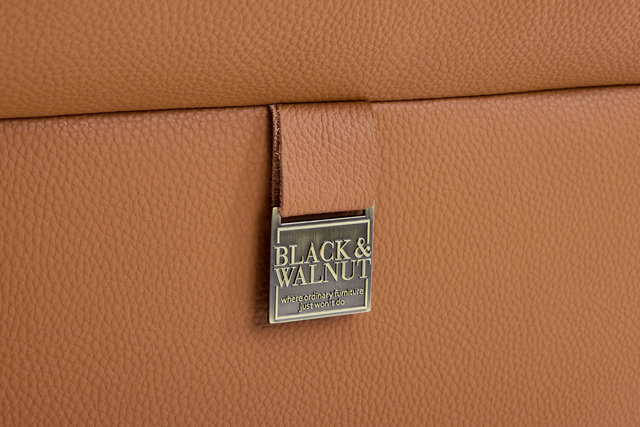COMPARISON BETWEEN TENCEL™ LYOCELL AND OTHER FIBRES
Over the years, man-made fibres have increasingly grown in popularity. Although synthetic fibres are known for better durability and cheaper manufacturing, they require a complex processing procedure and the use of chemicals. With this, there have been many debates between the benefits of semi/synthetic vs natural textiles and which is considered superior.
Today, the range of bed linen, mattresses and pillows are mind-boggling. Unlike mattresses and pillows that come with technical drawings of spring and memory foam layers, together with cooling materials, buying a quilt cover or fitted sheet can be pretty confusing given the lack of useful information.
Let’s get down to the good stuff - so what's the best material for bed sheets? We break down the benefits of each type of bedding to ensure you get a great night's sleep every time you hit the sack.
When it’s time to shop for bed sheets, there's one important factor to consider before you dive deep into thread counts and that’s finding out which fabric best suits your sleep preference. Not sure where to start? We've outlined the pros and cons for the five main options - TENCEL™ Lyocell, cotton, silk, bamboo, and linen.
TENCEL™ Lyocell
What is TENCEL™ material? A natural and sustainable material taking the bedding world by storm is TENCEL™ lyocell. It is made from wood cellulose, often obtained from eucalyptus trees that are grown on farms (meaning no koalas are harmed or displaced by the production of this material). The process used to grow and create TENCEL™ fibres is the most eco-friendly out of all semi-synthetic fibres, and has won awards for its low environmental impact.
TENCEL™ by Lenzing eliminates the negative environmental impacts of traditional fibre manufacturing by using innovative sustainable technologies. No nasty chemicals or water-wasting irrigation systems are needed to grow eucalyptus trees, making TENCEL™ lyocell sheets biodegradable and sustainable. TENCEL™ lyocell fibre is naturally hypoallergenic, and a great regulator of temperature. TENCEL™ bed sheets are also strong and durable which makes it easy to maintain.
Thanks to the natural structure of the lyocell fibre, bed linen made from TENCEL™ fibres is most well known for how it feels - exceptionally silky smooth and cool on the skin. This is great for hot sleepers and best for humid climates. Long fibres are also used when weaving Weavve TENCEL™ fibre sheets which results in a smoother surface that is not only comfortable but also beneficial to those with sensitive or easily-irritated skin.
An additional favourite feature of TENCEL™ fibres is that it is less prone to wrinkling and less vulnerable to fading with regular washing. It is also less likely to shrink and not prone to becoming thin over time. As TENCEL™ lyocell is a strong fibre with a higher dry and wet tensile strength (compared to silk and modal), it is capable of keeping 85% of its dry tenacity under wet conditions, allowing the fibres to retain their shape.
Cotton
Cotton is the most popular fibre for bedding, but it's also one of the most diverse so it is good to know what you're looking for.
At the very top is Egyptian cotton, it is famous for producing very fine threads that are spun into luxurious sheets. The fibres are classified as extra-long staple cotton. However, these come only from a particular Egyptian cotton plant, the Gossypium Barbadense, not all types of cotton from Egypt. This plant produces cotton fibres longer than 34mm.
The Gossypium Barbadense is not just grown in Egypt. In fact, there are other sources like Pima cotton from Peru, and Xinjiang cotton from China.
In assessing your various options for quality bedding, rather than just looking for Egyptian cotton, go for extra-long staple fibres, or in its absence, long staple fibres.
Extra-long staple cotton has these advantages:
- Comfort - few, longer fibres are required to form threads. These threads are finer and smoother as they have fewer interruptions.
- Durability - extra-long staple cotton fibres are strong, and the fewer interruptions there are in the yarn the stronger the sheet is. These fibres also pill less and retain their colour longer.
Also, look for labels and information that what you're buying is 100% extra-long staple cotton, as different qualities of fibres can be mixed together to make a single sheet.
Silk
Silk is well-known for its antimicrobial and hypoallergenic properties making it an ideal fabric for bedding, especially for allergy sufferers and those with sensitive skin.
There are two main types available: tussah silk and cultivated mulberry silk. The latter produces smooth, fine-textured bed sheets that are extremely durable. On the contrary, bedding made with tussah silk has a shorter shelf life and a coarser texture.
When buying silk sheets, you should factor in momme weight, which is the traditional measurement that indicates quality for silk. As a rule of thumb, the higher the momme weight, the better the quality. Most good-quality silk bedding ranges between 19-25 mommes.
As with all silk products, caring for silk isn't exactly a breeze. It requires hand washing or a cool wash and gentle spin cycle to keep the fabric in tip-top condition. While silk bed sheets probably aren't considered family-friendly, beauty experts live by the virtues of silk pillow cases for reducing everything from rosacea, to frizz and wrinkles.
Bamboo
Bamboo is the world’s fastest-growing plant. As such, bamboo bedding isn't just sustainable, it's considered environmentally-friendly to produce, requiring no pesticides to grow and using less water than cotton production. However, it is important to note that bamboo does have to undergo intensive chemical processes to turn it from raw bamboo pulp into yarn. Bamboo bed sheets are soft, cool, hypoallergenic and antibacterial, making it a popular pick.
It is also good to note that other fibres are required to turn bamboo fibre into a textile. That’s why most bedding products on the market are made of bamboo viscose, bamboo rayon bedding, or bamboo lyocell.
Linen
If you've been finding it hard to sleep on hot and humid nights, linen bed sheets may be a good option. Linen is woven from flax fibres and has a hollow core. It boasts both high air permeability and heat conductivity properties which means it can keep you cool when you're hot, and warm when you're cold.
Linen is a highly breathable fabric that can absorb up to 20 percent of its weight in moisture before feeling damp. Pure linen bedding is also considered a family-friendly option as linen naturally repels dirt and bacteria, however, linen is typically quite expensive. Also, if you are looking for bed sheets that are silky smooth, linen may not be the option for you as it is coarser in texture.

